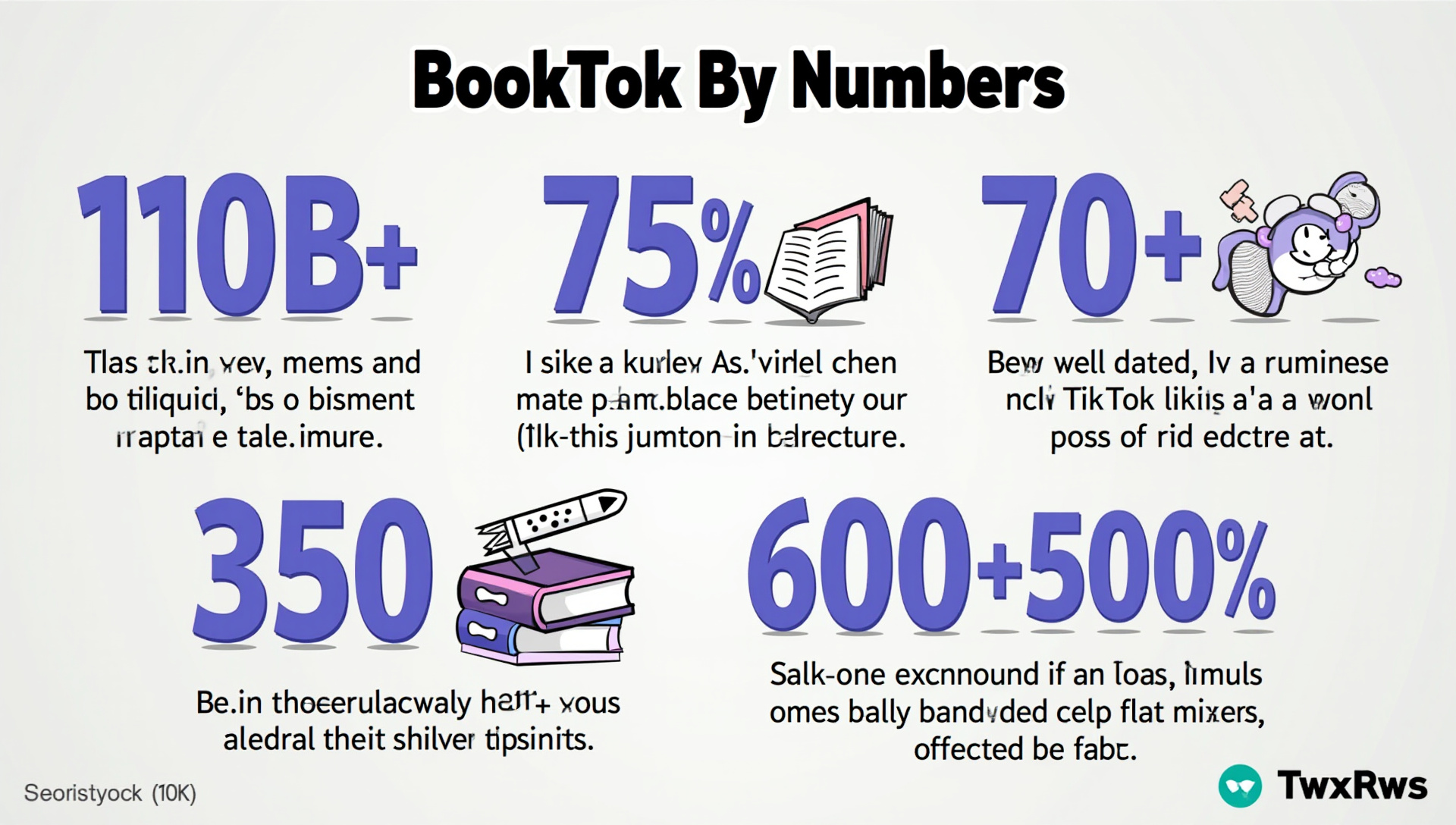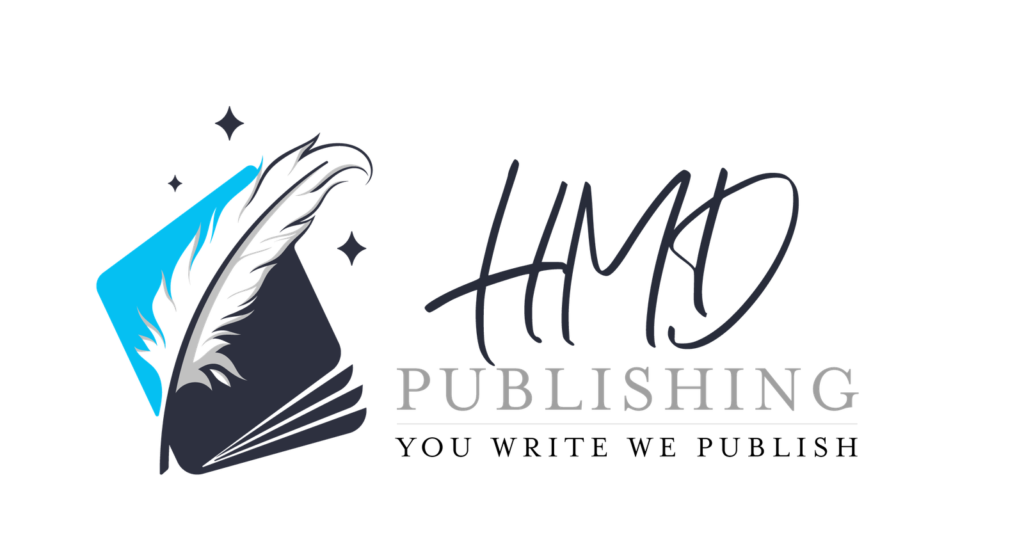BookTok has rapidly emerged as a game-changing platform for self-published authors, offering unprecedented opportunities to connect with readers and skyrocket book sales without traditional marketing budgets. With the BookTok hashtag surpassing 110 billion views in 2024, this TikTok subculture has transformed from a niche community into a powerful sales engine that independent authors can’t afford to ignore.
The BookTok Revolution: Why Authors Can’t Ignore This Platform
The numbers behind BookTok’s influence are staggering and speak volumes about its marketing potential. Approximately 75% of BookTok users are under 34 years old, representing a demographic with significant book-buying habits and disposable income directed toward reading materials.
What makes BookTok particularly valuable for self-published authors is its proven conversion power. Books that gain traction on the platform experience an average 300-500% increase in sales, with some viral titles seeing even more dramatic results. This conversion rate outperforms traditional social media platforms, making BookTok a uniquely efficient channel for indie authors with limited marketing resources.
The platform’s recommendation-based nature creates a snowball effect for books that connect with readers. Unlike other platforms where content quickly disappears, BookTok videos continue driving sales for weeks or months after posting, creating sustained visibility that’s nearly impossible to achieve through other marketing channels.

Decoding the Algorithm: How BookTok Visibility Works
Understanding TikTok’s For You Page (FYP) algorithm is essential for gaining visibility in the BookTok community. The algorithm prioritizes three key engagement signals: watch time (how long viewers stay on your video), completion rate (percentage who watch to the end), and shares (indicating high-value content worth passing along).
For BookTok specifically, the algorithm responds favorably to certain content markers. Using genre-specific hashtags like #RomanceBookTok or #ThrillerBooks helps the algorithm categorize your content and show it to the right readers. The algorithm also favors videos that prompt comments, particularly those asking questions that encourage viewers to share their opinions on books or reading habits.
Timing your posts strategically can significantly impact visibility. Data shows three peak times for BookTok engagement: weekday mornings (7-9 AM), early evenings (5-7 PM), and late nights (10 PM-midnight). Experimenting within these windows can help you find your optimal posting schedule based on your specific audience’s habits.

Content That Converts: High-Impact Video Formats
Emotional reaction videos consistently rank as the most powerful content format on BookTok, showing genuine reader responses to powerful moments in your books. These videos are 4x more likely to go viral than standard promotional content because they tap into the emotional connection readers crave with books.
Book aesthetics videos showcase the visual and atmospheric elements of your story, helping readers imagine themselves in your fictional world. These videos pair visuals representing your book’s setting, characters, or mood with music that enhances the emotional tone, creating an immersive preview that hooks potential readers.
Highlighting popular tropes in your books can dramatically increase interest from readers seeking specific story elements. Here are some of the top-performing trope hashtags on BookTok in 2024:
- Enemies to lovers
- Found family
- Morally gray protagonist
- Forbidden romance
- Hidden identity
Behind-the-scenes content humanizes your author journey and builds personal connection with readers. Sharing your writing process, research adventures, or publishing challenges helps readers feel invested in your success and more likely to support your work through purchases and recommendations.
From Zero to Hero: Case Studies of BookTok Success Stories
Alex Aster’s journey from rejection to success exemplifies BookTok’s career-changing potential. After receiving numerous rejections for her manuscript “Lightlark,” Aster shared a brief video about her book’s concept that went viral overnight, ultimately leading to a seven-figure publishing deal and over 2 million TikTok followers.
E. Lockhart’s “We Were Liars” demonstrates BookTok’s power to resurrect backlist titles. Published in 2014, the book experienced a stunning 600% sales increase in 2021 when BookTok users began creating emotional reaction videos to the book’s twist ending, proving that content timing matters less than emotional impact.
Self-published author Olivia Blake’s experience shows what’s possible for indies without traditional marketing support. Her fantasy series gained traction when readers began creating character aesthetic videos and trope highlights, ultimately driving over 50,000 sales and allowing her to quit her day job to write full-time.
Analyzing these success stories reveals common factors: they created content that triggered emotional responses, leveraged genre-specific communities, and maintained consistent posting schedules rather than posting sporadically. Each author also engaged actively with comments and created follow-up content based on viewer questions, building community around their books.

The BookTok Toolkit: Essential Resources and Apps
Creating professional-looking BookTok videos doesn’t require expensive equipment or extensive technical knowledge. CapCut and InShot offer free book-specific templates designed for authors, with features like animated page-turning effects, text animations for quotes, and transitions that mimic reading experiences.
Tracking your BookTok performance requires robust analytics tools beyond TikTok’s basic dashboard. Platforms like Penname and Publisher Rocket help authors connect BookTok activity to actual sales data, while TikTok Analytics Pro offers deeper insights into which content elements drive the most engagement for your specific audience.
Finding the right hashtag communities can make or break your BookTok strategy. Beyond the obvious #BookTok tag, consider these high-performing niche communities:
- #BookTokMadeMe BuyIt (for books gaining traction)
- #SpicyBookTok (for romance with mature content)
- #BookTokMystery (for thriller and mystery fans)
- #IndieBookTok (specifically for self-published works)
- #DNFBookTok (discussing books readers couldn’t finish—controversial but high engagement)
Trending sounds drive visibility on TikTok, but authors must be cautious about usage rights. The “Sounds for Small Creators” library offers copyright-cleared audio specifically for commercial use, allowing authors to promote products (books) without risking takedowns or account penalties.
Community Building: Beyond Viral Moments
Building a sustainable BookTok presence requires focusing on community rather than chasing viral moments. Successful author accounts maintain engagement rates of 8-10% (likes, comments, and shares compared to views), indicating an actively involved audience rather than passive viewers.
Collaborating with BookTok influencers can exponentially expand your reach, but approach partnerships strategically. Micro-influencers (10K-50K followers) often deliver better conversion rates than major accounts, with followers who trust their specific genre recommendations and act on their suggestions.
Live sessions create immediate connection and generate approximately twice the engagement of standard posts. Q&A sessions, live reading excerpts, and interactive events like character interviews allow real-time interaction that transforms casual viewers into invested readers.
Creating reader advocates—superfans who promote your books organically—represents the ultimate BookTok achievement. I’ve found that acknowledging readers who create content about your books through comments, duets, or mentions encourages others to join in, creating a self-sustaining promotion cycle that extends far beyond your own account’s reach.
Genre-Specific Strategies: What Works Where
Romance dominates BookTok, with content about the genre performing 40% better than average across all metrics. Successful romance authors focus on trope highlights, character connection moments, and “spicy” content teasers that hint at steam levels without violating platform guidelines.
Fantasy and science fiction benefit from worldbuilding showcases that bring your fictional universe to life. Videos explaining unique magic systems, creature designs, or fictional technology demonstrate the depth of your world and signal to genre fans that your book offers the immersive escape they crave.
Thriller and mystery authors succeed with hook-focused content that builds tension without spoiling major twists. The most effective format follows a pattern: present the inciting incident, introduce the main character’s dilemma, then cut off just as the stakes escalate—leaving viewers desperate to find out what happens next.
Non-fiction books face challenges on fiction-dominated BookTok but find success through highly specific problem-solution videos. Showing how your book solves a common problem in 30 seconds or less performs significantly better than general informational content, with personal development and how-to books seeing the strongest conversion rates.
Monetization Beyond Book Sales: The BookTok Ecosystem
The TikTok Creator Fund offers supplemental income for eligible authors, paying approximately $0.02-$0.04 per 1000 views. While these rates won’t replace book income, they can offset content creation costs and provide passive income from your marketing efforts.
Merchandise opportunities represent a significant revenue stream for 30% of successful BookTok authors. Character-inspired items, quote merchandise, and reading accessories connected to your book’s aesthetic can generate substantial supplemental income while strengthening reader connection to your fictional world.
Brand partnerships become available once you’ve built an engaged BookTok following. Companies targeting readers—from subscription boxes to reading accessories and lifestyle brands—seek authentic partnerships with author accounts, often paying $500-$2000 per sponsored post depending on audience size and engagement rates.
Translating BookTok success to other platforms requires strategic cross-promotion. I’ve found the most effective approach is creating platform-specific content rather than reposting identical videos—for instance, sharing behind-the-scenes of your BookTok creation process on Instagram or expanding on book themes through longer YouTube videos.
Measuring Success: BookTok Metrics That Matter
Tracking the right performance indicators ensures your BookTok efforts translate to actual business results. Beyond view counts, focus on completion rate, save ratio, and comment-to-view ratio—metrics that indicate not just visibility but genuine interest that’s more likely to convert to sales.
Correlating TikTok analytics with book sales requires establishing attribution systems. Using unique discount codes, special landing pages, or simply asking customers “how did you hear about this book?” can help connect BookTok efforts to actual revenue, though platform algorithms make perfect attribution impossible.
Setting realistic benchmarks depends on your account size and genre. New accounts should aim for 2-3% engagement rates (likes + comments + shares ÷ views), while established accounts typically see 5-8% engagement when content resonates with their audience.
Calculating return on investment for BookTok marketing means valuing your time appropriately. Track hours spent creating content versus resulting sales, but also consider long-term benefits like audience building and platform algorithm favor that continue paying dividends beyond immediate revenue.
The Authentic Approach: Balancing Trends and Authenticity
Finding your authentic BookTok voice means adapting trends to fit your personality rather than forcing yourself into uncomfortable formats. The most successful author accounts blend current BookTok trends with authentic storytelling that reflects their unique author voice and brand.
Sustainable content creation prevents burnout while maintaining algorithm visibility. I recommend a schedule of 3-5 posts weekly rather than daily posting, focusing on quality over quantity and repurposing content elements across multiple videos to maximize efficiency.
Ethical considerations matter in BookTok marketing, particularly regarding authenticity. While it’s tempting to chase trends like “crying reaction videos,” manufactured emotions are easily spotted by viewers and can damage author credibility—authentic content consistently outperforms purely trend-driven content in long-term metrics.
Balancing long-term brand building with short-term visibility tactics creates sustainable BookTok success. Dedicate 80% of your content to genuine community building and 20% to trend participation, ensuring you remain visible without sacrificing the authentic connection that ultimately drives reader loyalty and sustainable sales.
Sources
TikTok official statistics on hashtag performance and user demographics
Case studies of successful BookTok authors including Alex Aster



